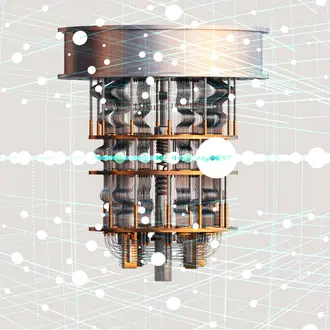Credit: iStock.com/AndyOdo
The battery-powered sedan broadcasts a request to merge into the next lane, and other nearby vehicles automatically adjust as it glides over and exits the highway. Inside, the passenger finishes a quick email check, then clicks on a monitor to catch up with the day’s news.
For fans of automated vehicles (AVs), it’s the holy grail of transportation: Cars would pilot themselves in an orderly fashion, making driving safer, cheaper, and faster. Easy transportation would be available to everyone without the environmental impacts or traffic congestion seen today.
But those benefits could be offset or canceled out altogether, skeptics say, if the technology inadvertently encourages more driving among people who can’t currently drive, and among commuters who might opt to travel all the way into cities rather than “park and ride.” Public transit systems already seeing reduced ridership could collapse entirely.
Most agree that encouraging carpooling is one solution to the problem, but the reality is much more complex, according to upcoming research by PhD candidate Sergey Naumov, and professor Charles Fine and assistant professor David Keith from the System Dynamics group at MIT Sloan.
“We show that the well-intentioned move to promote pooling may have the unintended consequence of triggering a public transit death spiral, leading to both worse public transit quality and more rather than less traffic congestion,” the paper states. “The deployment of AVs and pooling can be effective at improving the sustainability of urban transportation systems, but only when accompanied by policies that manage induced demand for driving and sustain public transit service quality.”
Naumov presented the forthcoming paper at the 2019 MIT Sloan PhD program doctoral research forum on March 21, where it took first place.
The research shows that rolling out automated vehicles and pooling programs without policy measures in place to mediate induced demand is unlikely to reduce roadway congestion. What’s more, public transit could suffer as declining ridership causes revenues to decrease and conditions to erode, pushing even more people toward driving. That would have the dual effect of worsening conditions for both modes of transit.
“If AVs make driving more attractive, demand for driving will increase, with consequences for both demand for road space and ridership of competing transportation modes,” the researchers write.
Policies needed
But the right policies — including road pricing or taxes on vehicle miles traveled, and the expanded use of pooled/high-occupancy vehicle lanes — could shift the burden of the downsides of increased driving back to the drivers, the research found. The policy solutions could take different forms in different cities.
“To be clear, we are not suggesting that either AVs or pooling are inherently bad — quite the opposite,” the researchers write. “It is specifically because these innovations have the potential to make driving safer, cheaper, and easier, and therefore be highly attractive to many commuters, that the effect of these innovations on the entire urban transportation landscape must be thought through carefully.”
Regulators will also need to closely watch how the deployment of more imminent automated vehicles — which still operate with some level of human intervention — impact transportation systems, with the goal of helping them gain societal and regulatory acceptance. AVs and public transit could also work in tandem, the paper found, with automated options providing a solution for the “last mile” problems public transit experiences.
The contest was judged by three MIT Sloan alumni: Hasan Arslan, PhD ’05, Tristan Bothelo, PhD ’17, and Luo Zuo , PhD ’13. Second place went to Daniel Kim in the PhD program’s Technological Innovation, Entrepreneurship & Strategic Management group, for his paper “Predictable Exodus: Startup Acquisitions and Employee Departures.”
Other presenters included:
- Artem Timoshenko, “Identifying Customer Needs from User-Generated Content.”
- Hyejun Kim, “Knitting Community: Human and Social Capital in the Transition to Entrepreneurship.”
- Bill Goulding, “The Causal Impact of Regulation on Bank Trading: Evidence from Over the Counter Derivatives.”
- Ankur Chavda, “The Downside of Experimentation: Evidence from Television Shows.”
- Daniel Rock, “Engineering Value: The Returns of Technological Talent and Investments in Artificial Intelligence.”
- Alexis Montecinos Bravo, “Too Big and Too Different to Be Overlooked: A DSGE Approach to Government Banks.”



